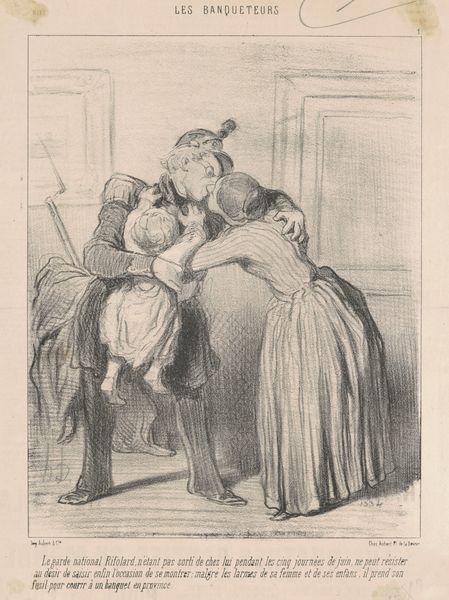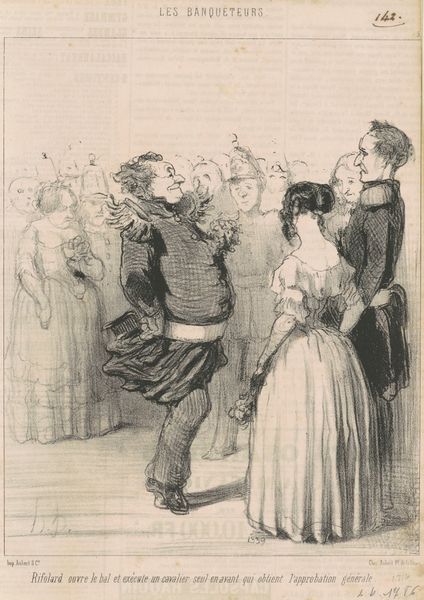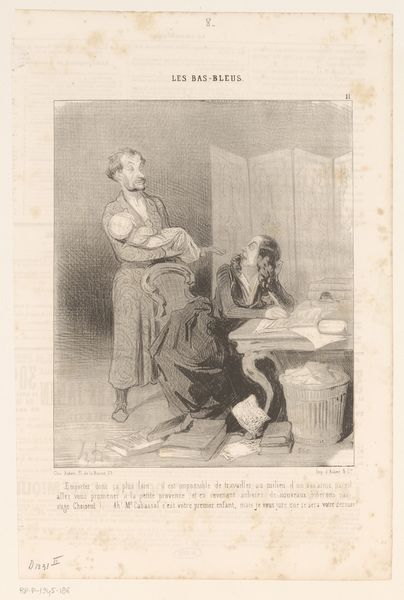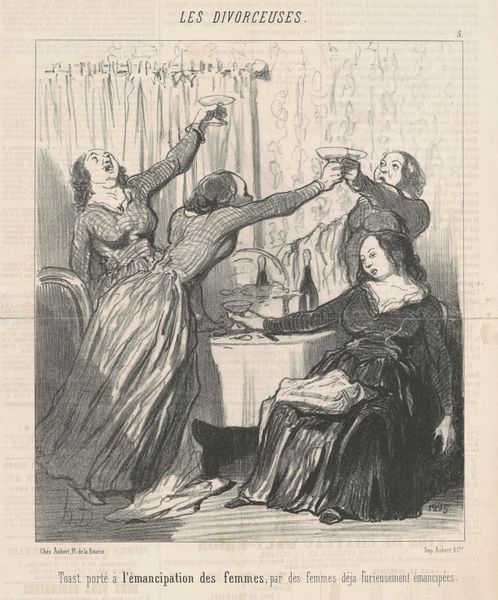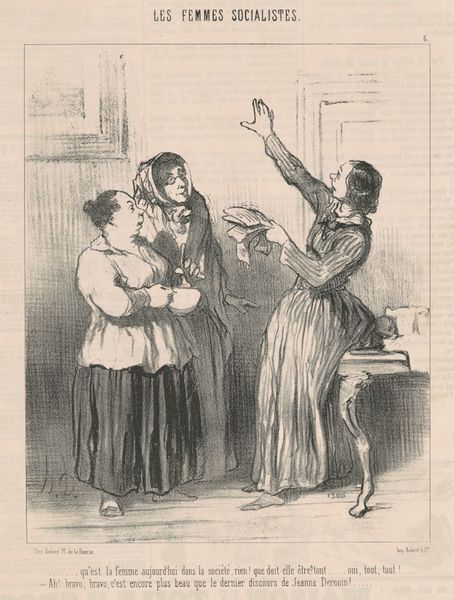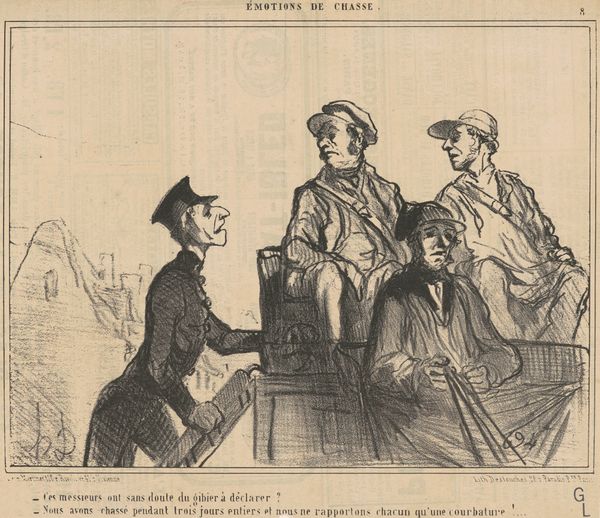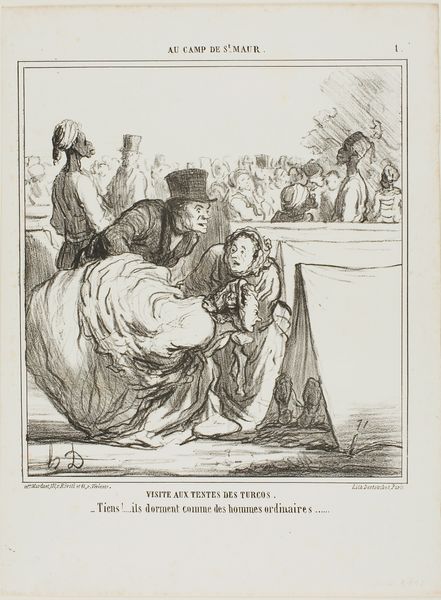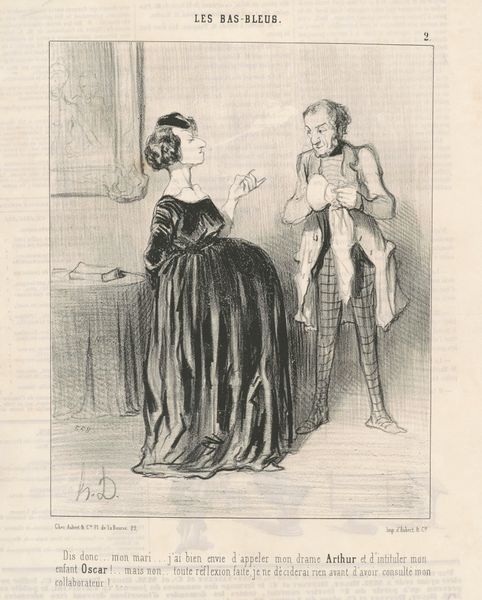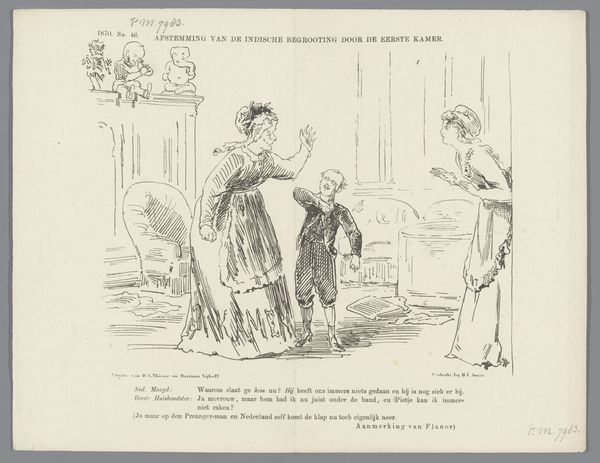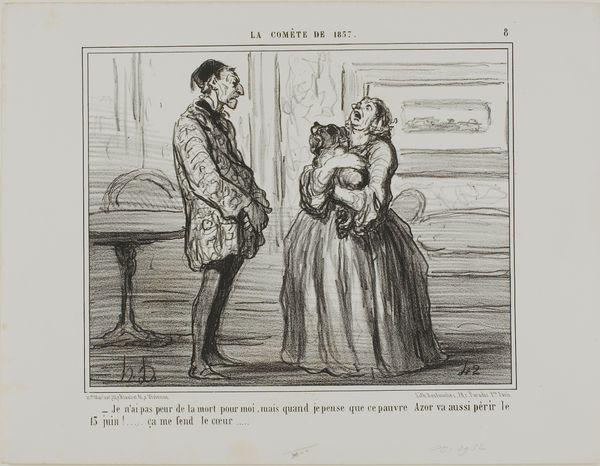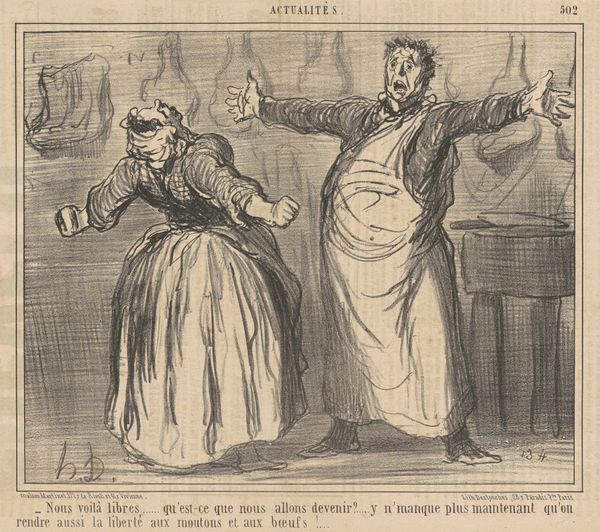
lithograph, print
#
lithograph
# print
#
caricature
#
romanticism
#
genre-painting
Copyright: National Gallery of Art: CC0 1.0
Curator: Welcome. Today, we're looking at a lithograph by Honoré Daumier, created around the mid-19th century. The piece is titled "Je crois pouvoir dire, sans me flatter…", which translates roughly to "I can say, without flattering myself...". Editor: My first impression is that it’s wonderfully wry! The exaggerated features immediately convey a sense of satire, even before delving into the context. And the light in the image, contrasted by harsh, broad shading and texture, makes this work captivating to behold. Curator: Indeed. The composition itself is carefully constructed. Note how Daumier employs distinct visual planes. The foreground with the family and table setup versus background image act as separate structural support beams for the composition to rely upon. Editor: And observe the woman holding the decorated pot, almost reverentially. It's framed like a religious icon, subverting traditional symbolism by elevating a craft project. Is it mocking middle-class aspirations to artistry, perhaps? The child to the side also provides a comedic moment within the overall stage-setting. Curator: Quite possibly. Potichomanie, as we can see labeled up top in the title card, was a popular craze at the time—the art of decorating glass to resemble porcelain. Daumier clearly satirizes this trend and society's pretentious attitude surrounding it. The scene creates humor through an amateur endeavor treated with utmost artistic pretension. Editor: Right! The light and dark tonalities of the lithograph further emphasize the contrast. The darkness suggests a critique, yet it’s tempered by the lightness of the "masterpiece" itself. In a sense, the light is being taken, highlighting the falseness of their aspiration, not a truthful endeavor in beauty. Curator: Precisely! He’s using the visual language of Romanticism to poke fun at its excesses and the societal values that underpin them. His genius lies in this use of semiotic framing and balance of content, but to achieve true artistic profundity! Editor: Reflecting on the piece, it makes me ponder how tastes shift through the ages. Is today’s celebrated "art" tomorrow’s potichomanie? This snapshot serves to demonstrate how cultural touchstones serve as emotional relics through Daumier's astute lens. Curator: I concur. It's an analysis of lines, both literal in the lithographic print and symbolic through visual story, revealing deeper levels of intent, design, and interpretation.
Comments
No comments
Be the first to comment and join the conversation on the ultimate creative platform.

